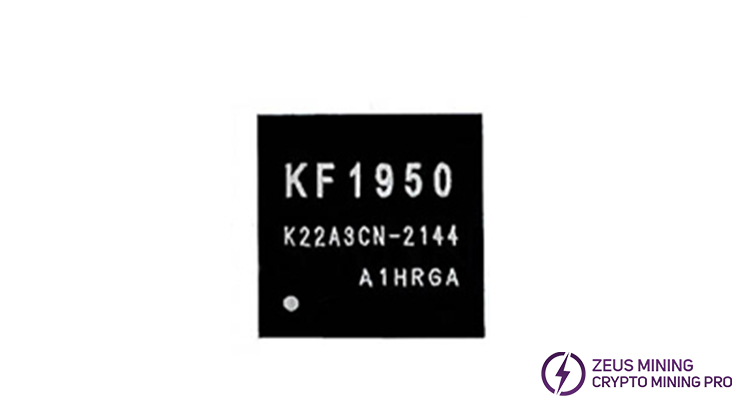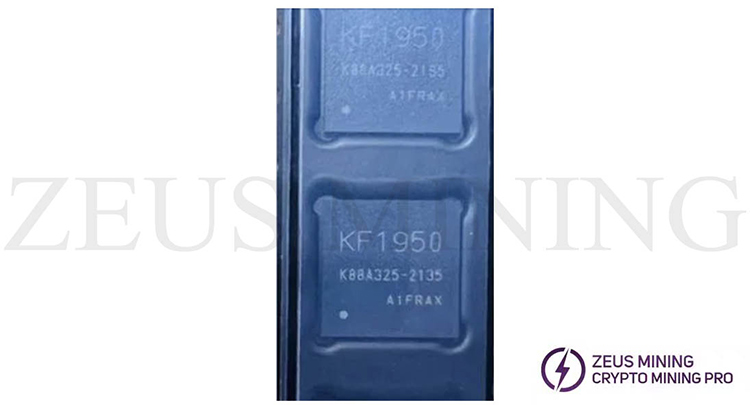


The Whatsminer KF1950 ASIC chip is used to replace the faulty chip on the M30 series hash boards, suitable for chip replacements on M30, M30S, M30S+, and M30S++. It is the core chip that maintains the hash rate operation of the Whatsminer hash board.

Chip failure can cause miners' hashing power to decrease or even stop working, resulting in miners not functioning. It may also cause the internal temperature of the device to rise, leading to damage to other hardware.

Once a faulty Whatsminer ASIC chip is detected, it should be replaced immediately. The steps for replacing the KF1950 chip are as follows:
● Power off, disassemble the miner's casing, remove the exhaust fan, then unplug all cables. Carefully take out the faulty hash board and place it on an anti-static workbench, allowing it to cool down fully. This step can use a cooling fan or other cooling tools for physical cooling.
● Remove the heat sink and use the Whatsminer chip test fixture to locate the faulty chip. To find the faulty chip, please refer to Whatsminer M30S chip report is incomplete. Clean the area around the faulty chip, apply soldering paste to its pins, and set the constant temperature heating platform to approximately 300°C. Once the set temperature is reached, place the faulty area of the hash board above the heating platform. When the solder on the chip pins begins to melt, use tweezers to clamp the chip until it can be removed.
● Move the hash board to an insulating pad, wait for it to cool down, and then use a cleaner to clean solder residue.
● Check the model and appearance of the new chip, use the chip tinning tool to evenly tin the new KF1950 ASIC chip, then add a small amount of flux on the chip pad again.
● Place the faulty area of the hash board back on the heating platform, heat it until the solder on the solder pads melts. Align the KF1950 chip pins with the solder pads, continue heating until the solder paste covers the chip pins, gently press the chip surface with tweezers, and when the solder on the chip pins is full and shiny, remove the hash board. Finally, wait for the solder on the chip pins to solidify before removing the tweezers. Then, move the hash board back to the anti-static insulating pad to cool down, then clean the hash board.
● Use a multimeter to check the chip soldering condition and test the single board status with a testing fixture. If the test results are normal, the replacement is complete. Evenly apply thermal grease to the chip surface, install the heatsink, then put the hash board back into the miner's box. After installing all other components, power on the miner, run it for a while, and check if the hash rate has returned to normal.
After completing the above steps, the miner will restore its normal hash rate, helping it to maintain consistent profitability.
Dear Customers,
Hello, April 4, 5 and 6, 2025 (GMT+8) are the traditional Chinese festivals - Qingming Festival. Our company will suspend shipments during these 3 days and resume shipments on April 7 (GMT+8). We are deeply sorry for the inconvenience. Thank you for your understanding and support.
Best wishes,
ZEUS MINING CO., LTD